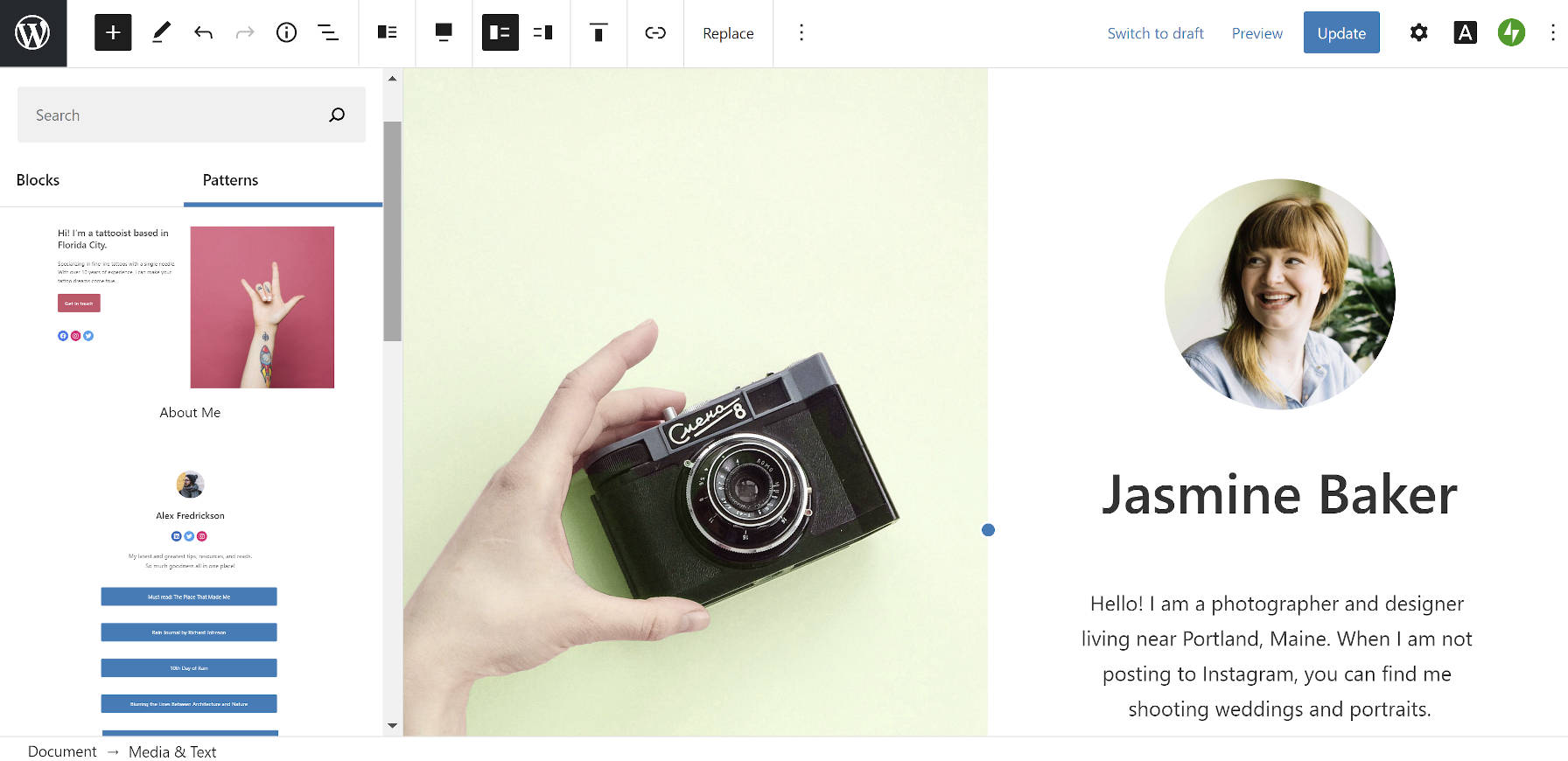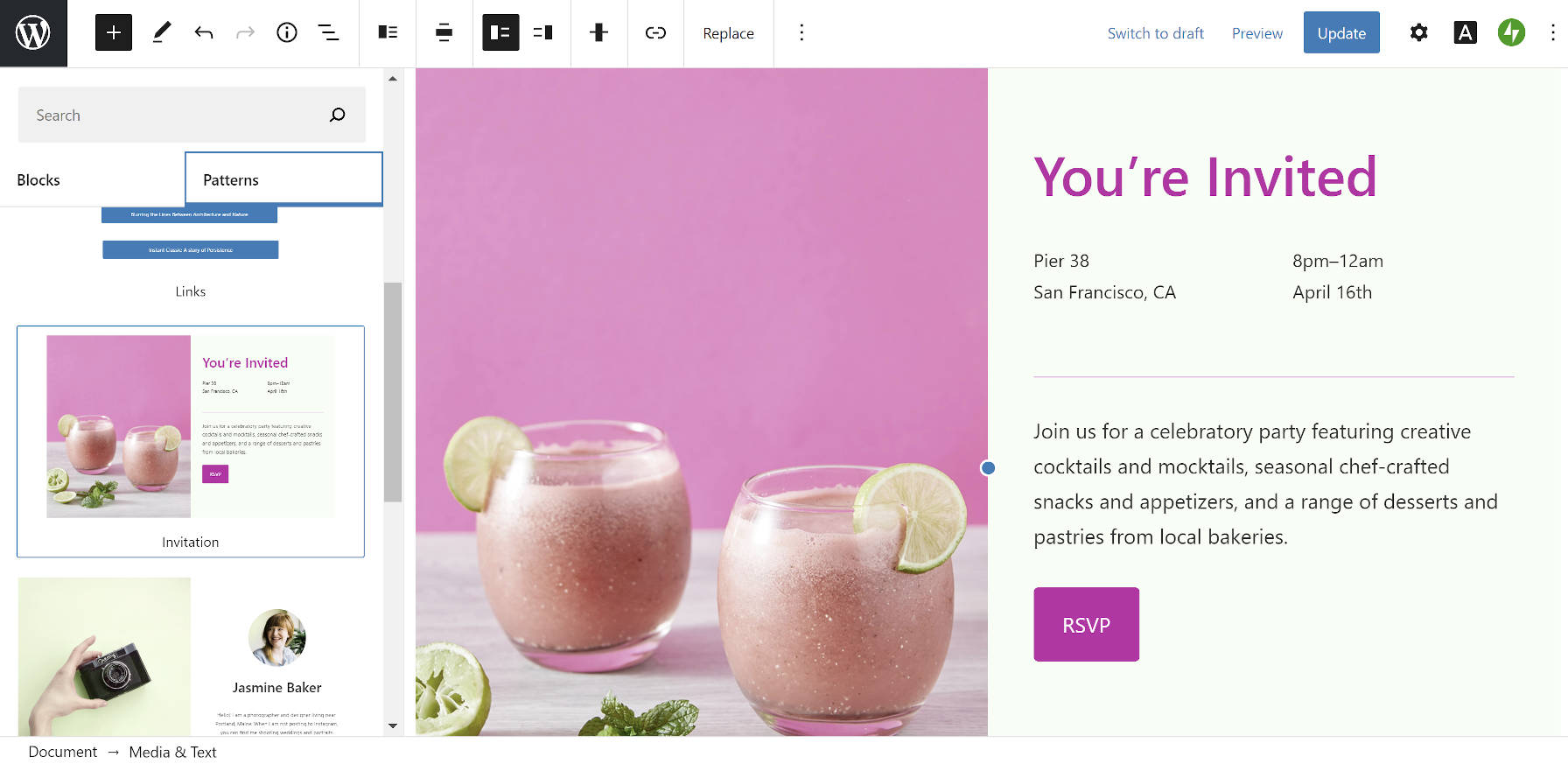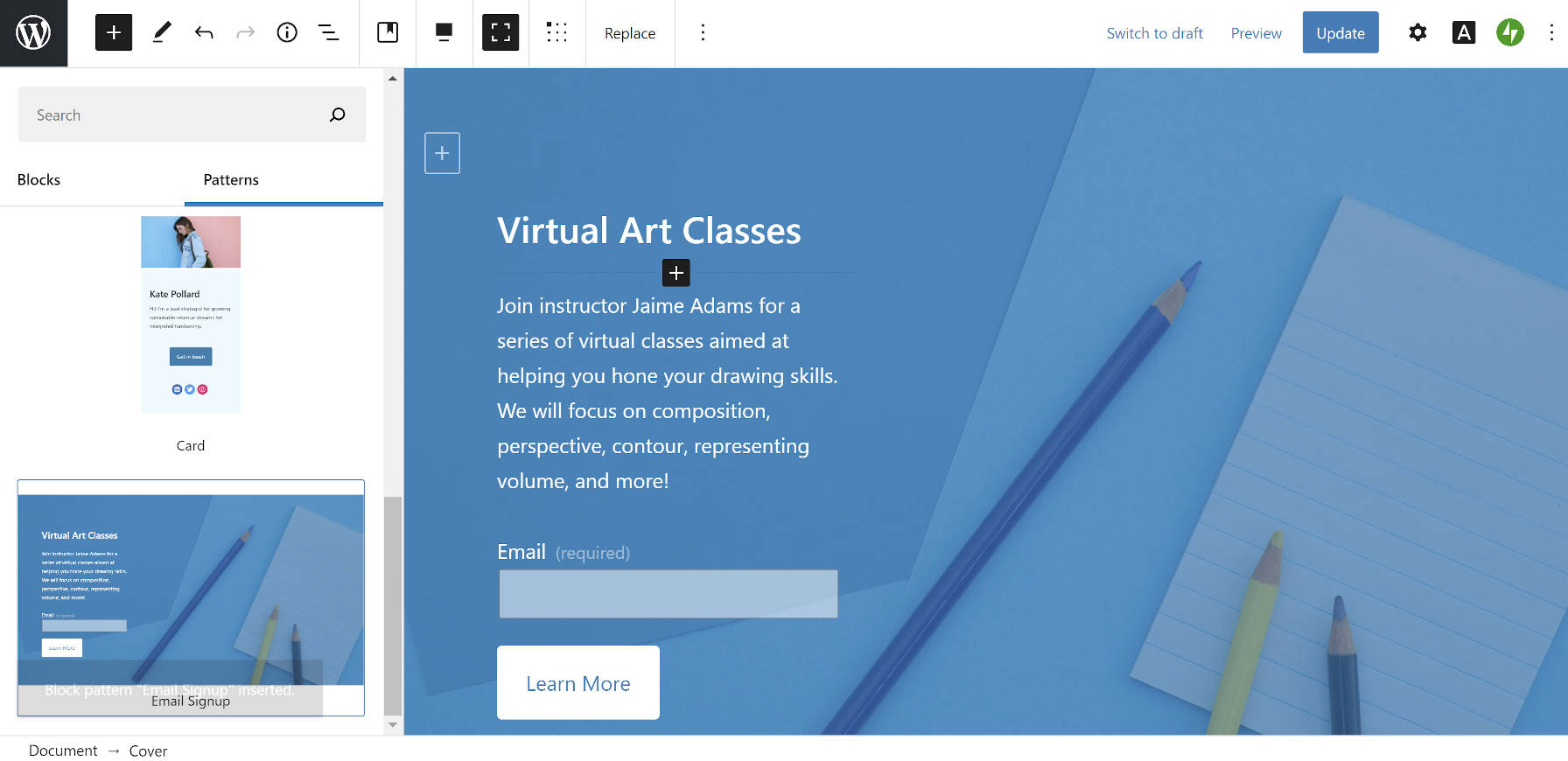
On Monday, Automattic announced its Blank Canvas theme on WordPress.com. The goal is to allow end-users to build single-page websites, such as an “about me” or product landing page.
Blank Canvas is a child theme of Seedlet, which Automattic’s Theme Team has been using as a launchpad. One example is its recently-released Spearhead child theme. It also provided the foundational work for the recent Twenty Twenty-One default WordPress theme.
One-page themes are nothing new. Theme builders have been releasing them for years in various forms.
“We’ve been working on block patterns a lot lately, and it became clear that many of the single-page websites we come across daily — collections of links, newsletter signups, etc. — are basically just simple block patterns sitting on an otherwise blank page,” said Kjell Reigstad, the lead developer on the theme. “That being the case, it seemed like WordPress should be able to power these sorts of single-page sites pretty easily. Blank Canvas is an attempt to try that out.”
WordPress is not the ideal platform for the majority of one-page sites. Doing so includes setting up a database, installing the software, and keeping everything updated. The admin interface is not well-suited to those types of sites. WordPress is a content management system. One page is not enough content to need a full-blown CMS to manage. There simply is little upside for the average user to go through the hassle of doing this on even the cheapest of shared hosting.
However, if you have a network where someone else, such as WordPress.com, takes out all the hassle of maintaining the backend and when it does not cost you a dime, WordPress suddenly makes more sense. It becomes an ideal platform for these types of sites.
Frankly, I do not know why they have not pushed this concept sooner. Jason Schuller has made a go of it with Leeflets in the past. Since then, he and Philip Kurth have taken that idea further and launched WP Landing Kit, which builds on the same concept of creating multiple single-page landing sites from one WordPress installation.
In some respects, Blank Canvas offers a glimpse into Full Site Editing. It is almost a stepping stone or a small yet limited preview of things to come. The theme puts the entire design process into a single page and a single editor. Eventually, this will be extended to the whole website.
“I think that’s a great way to think about it,” said Reigstad. “Full Site Editing is coming soon, but in the meantime, Blank Canvas lets you do just a little bit more with Gutenberg than you could before.”
About the Theme
The theme is called Blank Canvas for a reason. Its demo page is literally a blank screen with a footer message. The idea is that the end-user designs their homepage — or their entire site in the case of a single-page website — via the block editor.
For those who need a starting point, the theme comes packaged with six block patterns:
- About Me
- Links
- Invitation
- Split Screen
- Card
- Email Signup

Self-hosted WordPress users can install the theme too. It is currently awaiting review for the theme directory, but they can snag the ZIP file or SVN link from its Trac ticket. For those giving it a test, be sure to disable the title and tagline via the customizer so they do not appear on the front end. That is assuming you want to use the theme as intended. It will also work as a more traditional theme because the Seedlet parent theme covers all the necessary features.
There are differences between the theme on WordPress.com and that submitted to the WordPress.org theme directory. The .ORG version has only four block patterns. The .COM version includes an additional Card pattern, which integrates with Automattic’s Layout Grid plugin. The Email Signup pattern needs Jetpack’s form feature.
Simple conditional checks for Layout Grid or Jetpack before registering the patterns would suffice for users with those plugins installed. “That’s planned,” said Reigstad of adding the missing patterns, “but we just didn’t implement it yet.”

WordPress.com users have something else to look forward to. In November, the service launched over 100 patterns. “One of the nice things is that there are already a lot of patterns out there that seem ready-made for single-page websites,” said Reigstad.
He did say the team is working on bundling more patterns in the future. These may include more “link in bio” designs that expand on the one already in the theme today.
Pioneering Block-Friendly Themes
Several of the ideas available in this theme seemed to have started from the WordPress Theme Experiments repository. It features block patterns similar in scope to the Carrd-like theme Reigstad built last October.
“In general, building block-based themes helped redefine our idea of what a theme needed to be,” he said. “We’d tended to think of a theme as a complicated piece of software that accounts for every scenario you throw at it: a blog, custom post types, category pages, search pages, the 404 page, etc.”
Reigstad said that the block-based themes paradigm has forced the Theme Team to start small. Because Full Site Editing is still in flux, its features not ready, the team has built proof-of-concept themes with limited functionality.
“The possibilities for block-based themes have grown considerably since then (as shown by TT1 Blocks, Q, Block-based Bosco, and others), but the early constraints helped spark ideas like that Carrd-inspired theme,” he said. “It turned out that you could build a pretty useful site with just a handful of blocks.
“That mindset definitely informed Blank Canvas — we started small, with just the functionality someone would need to build a single-page site. Since it’s based on a full-featured theme (Seedlet), you can grow with it too.”
Themes Team on .org never allowed blank themes in the repo. If this one is allowed, all of the authors who got the boot before should be (and will have every right to be) very pissed.
If this theme passes the review I’m afraid of the message that will be sent to theme authors on .org. And it’s a very clear one: Quod licet Iovi, non licet bovi…